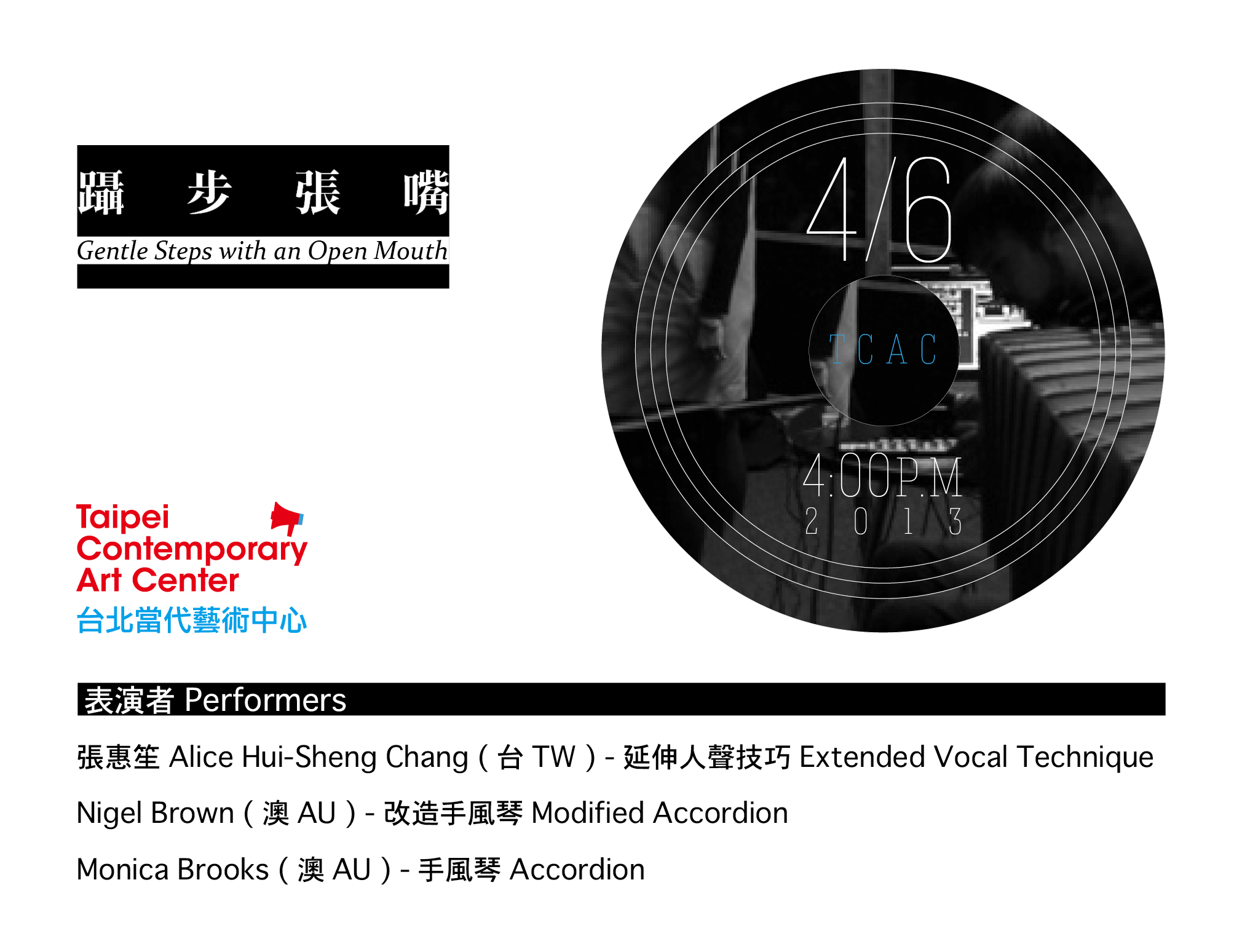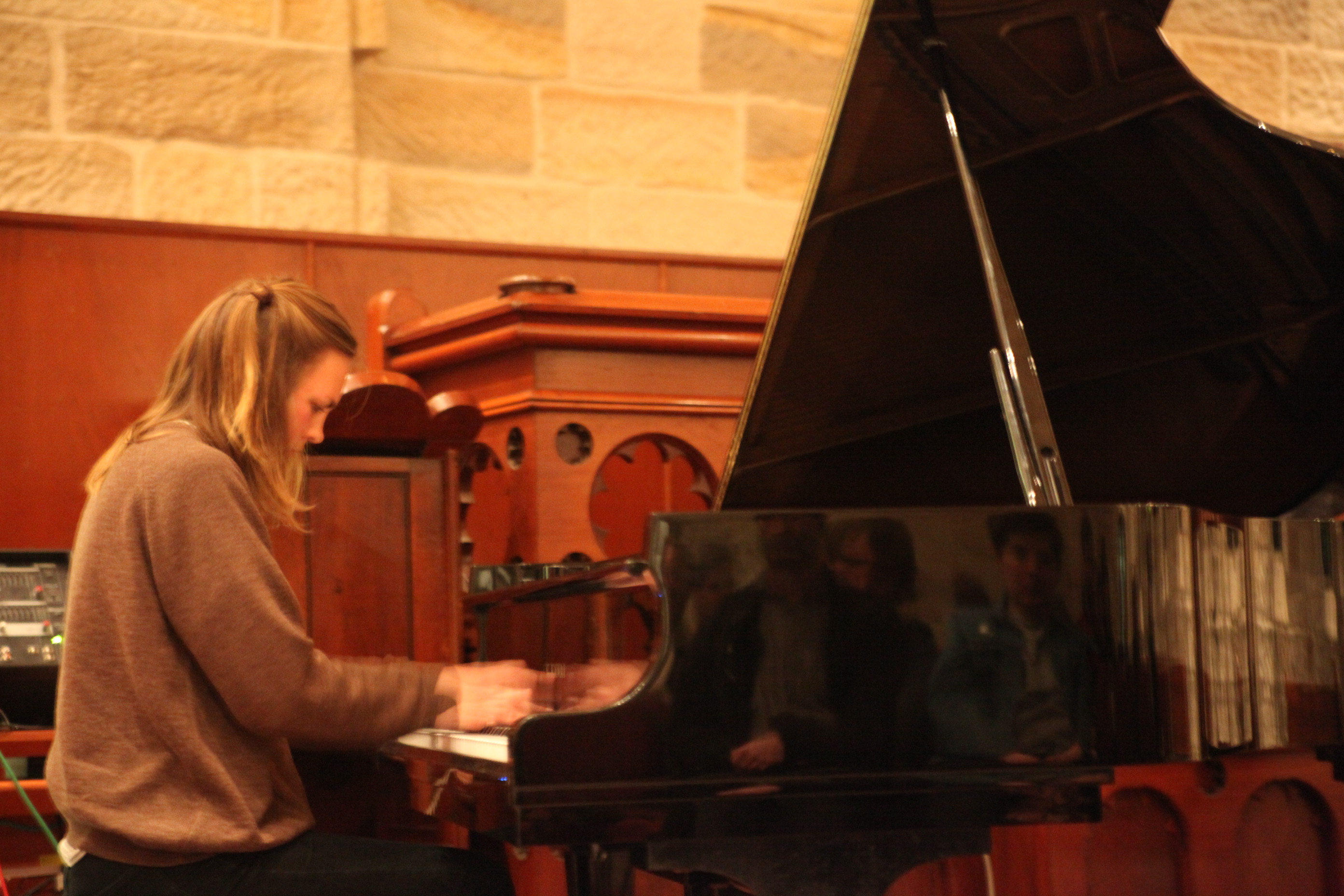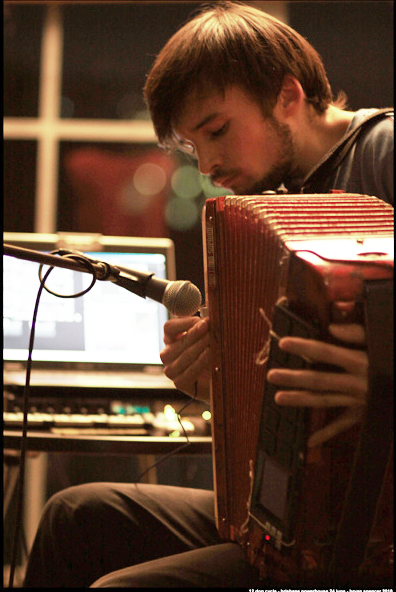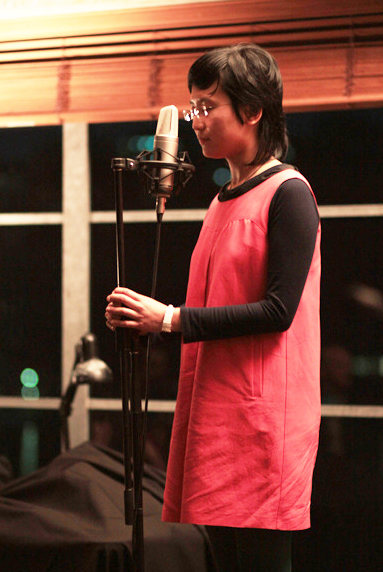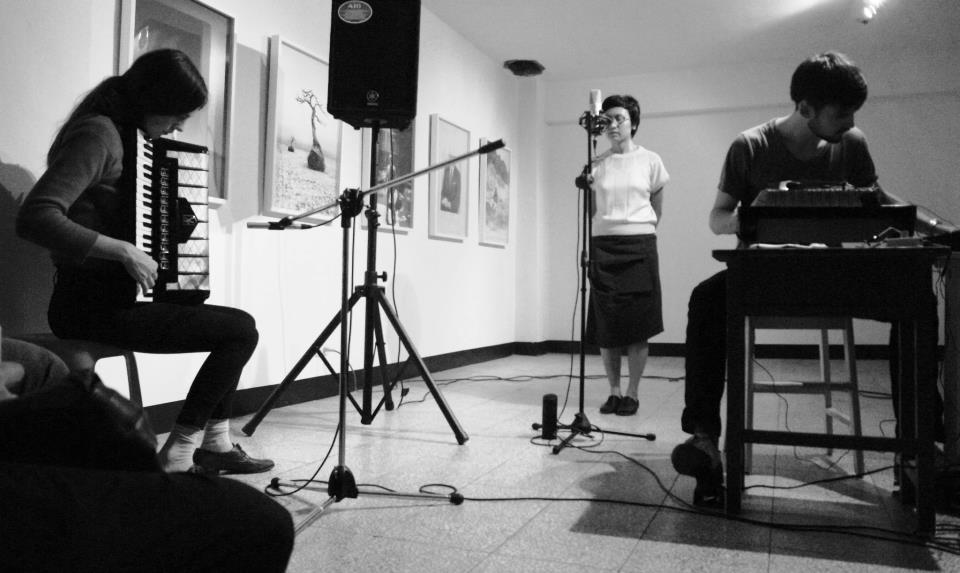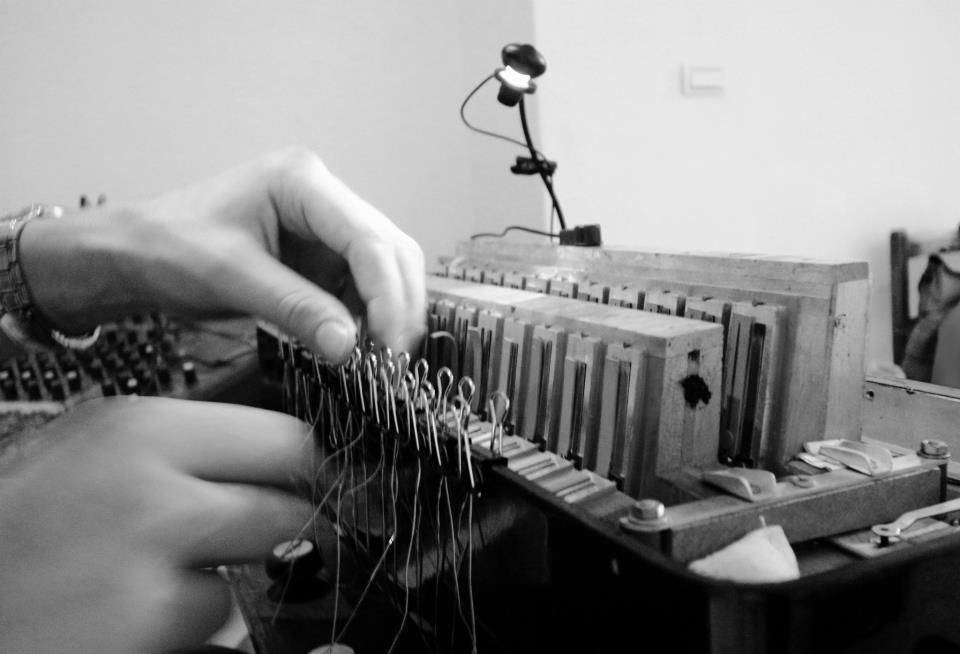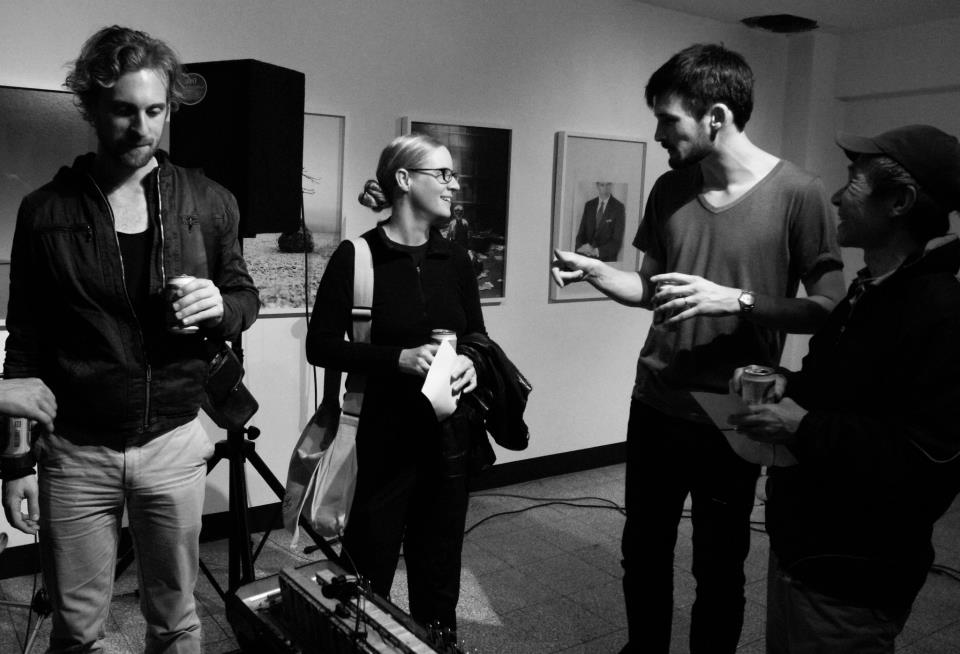04.06 躡步張嘴 Gentle Steps with an Open Mouth 4pm
一起分享週六下午的即興聲音表演:以人聲與手風琴延展尋覓各式極微的聲色質感。Solo至三人表演組合。
A Saturday afternoon of improvised sound in instrument extension, microsonics and abrasive textures. Solo/Duo/Trio.
(For English please scroll down)
入場:免費(自由樂捐)
表演者 Performers
張惠笙 Alice Hui-Sheng Chang (台TW) – 延伸人聲技巧 Extended Vocal Technique
Nigel Brown (澳AU) – 改造手風琴 Modified Accordion
Monica Brooks (澳AU) – 手風琴 Accordion
表演者網站 Websites
www.huishengchang.com
www.nigelbrownsound.com
soundcloud.com/monica_brooks
表演介紹
張惠笙與Nigel Brown的創作名為12 dog cycle。他們以手風琴和人聲共享的呼吸循環限制為合作基礎 ; 手風琴從重複響音與極簡的音頻模式中,帶出其持續型表演聲調(Drone)。運用與人聲的對比或支持來創造各型的重複性和諧聲音穿梭。
這次另邀雪梨的實驗音樂家,作曲家及聲音音樂家 Monica Brooks 加入表演。她表演以手風琴,電腦或鋼琴為主。Monika 的音樂極受化約主義,極簡主義與噪音音樂影響。
表演者簡介
MONICA BROOKS
即興創作者、作曲家,同時是以實驗手法進行聲響與音樂創作的聲響藝術家。畢業於西雪梨大學的音樂與電子藝術學系,也從此展開她的聲響藝術之路。她目前居住在澳洲雪梨,而她的聲響表演主要以手風琴、筆記型電腦、或鋼琴作為樂器。她的創作風格深受日本聲響系(Japanese Onkyo)、德國極簡主義、澳洲極簡主義者與噪音藝術家的影響。 她也曾和許多名人聯合演出或錄音,其中有Jim Denley, Dale Gorfinkel, Herminone Johnson, Chris Abrahams, Robbie Avenaim, Clare Cooper, Jeff Henderson, Jason Kahn, Jan Jun, Richard Nuns, Eugene Chadbourne, 以及 Joe Talia。
從她最早的演出中(2007由David Haines策劃,於雪梨毛利藝廊演出),便可見作品經常具有美洲後現代主義中幽默含蓄的諷刺,而科技與無線電相關運用技術也帶給她的相當大的啟發。莫尼卡投入許多計畫之中,其中有各界音樂創作人合作組成的即興團體「小支派交響樂團」 (Splinter Orchestra)、 在澳洲各地進行戶外表演的「西頭關景台計畫」 (West Head Project)、以及和其他樂手組成的團體如 「Embedded」與「Great Waitress」。
Nigel Brown
近六年來不斷地以手風琴實驗與創作、將樂器進行拆解與調整。其中,他最新的作品即為了能觸碰到手風琴內部的簧片塊,便拆除其風箱與所有琴鍵,結合各式各樣的收音器、麥克風等之後,原來充滿音叢與持續音的手風琴,便轉換成節奏性極強的金屬樂器。
Alice Hui-Sheng Chang
張惠笙 以延伸人聲技巧進行即興創作。她探索人聲的各種可能性,包括測試各種發聲部位張力、嘗試使空氣進入不同的通道、及探究放聲大喊與呼吸時的震動。在不使用任何電腦儀器之下,當表演之中謹存在演出者的口腔與喉嚨發出的自然聲響,不但藝術家必須更加投入表演之中,聽眾也會在接收訊息時同時和藝術家拉近距離。張惠笙透過她的實驗創造出一系列細膩美麗而原始自然的聲音景緻。
Performance
Alice and Nigel perform as 12 dog cycle. Pairing the breathing limitations of both piano accordion and human voice, patterns are built on frequencies split from a continuous accordion drone. They create different tunnels of harmonic repetition that support or contrast the voice.
In this performance, they invite Monica to join in for different combinations. Monica is an experimental musician, composer and sound artist based in Sydney. She performs on either accordion, laptop or piano, and is heavily influenced by reductionism, minimalism and noise music.
Performers Bio
Monica Brooks is an improviser, composer and sound artist investigating experimental approaches to creating sound and music. Monica’s evolution as a sound artist is routed from UWS’ Music and Electronic Arts undergraduate programs. Based in Sydney, Monica bases most soundwork from performances on either accordion, laptop or piano, with a clear influence from Japanese Onkyo, German reductionism, and Australian minimalists and noise-artists. Monica has performed or recorded with various fabulous folks such as Jim Denley, Dale Gorfinkel, Herminone Johnson, Chris Abrahams, Robbie Avenaim, Clare Cooper, Jeff Henderson, Jason Kahn, Jan Jun, Richard Nuns, Eugene Chadbourne, and Joe Talia. From one of her first group shows (at Mori Gallery in 2007 curated by David Haines), Monica’s sound works are often in gentle parody of Americana post-modernism, and also heavily inspired by the technology and usage of radio transmission. She is involved in projects such as Splinter Orchestra, West Head Project, Embedded, and Great Waitress.
(https://soundcloud.com/monica_brooks)
(http://www.splitrec.com/index.php?go=shop&id=324)
(http://www.australianmusiccentre.com.au/artist/brooks-monika)
Nigel Brown has been working with the piano accordion for the past six years, gradually deconstructing and modifying the instrument to suit his needs. The most recent development has been the complete removal of the bellows and keyboard components of the instrument to allow access to the internal reed blocks for tactile manipulation. Combined with an assortment of preparations, pickups and microphones the instrument now has the capacity for bending cluster drone explorations through to pummelling metallic excursions.
(www.nigelbrownsound.com)
(12dogcycle.bandcamp.com)
Alice Hui-Sheng Chang’s work focuses solely on developing extended vocal technique as a means for improvisation and communication. Her vocal explorations include sound from varying tension of physical vocal parts, driving air into alternative passages and vibration of calls and breath. The physical sound produced by a mouth and throat organism, under no computer manipulation, is not only for the artist to be fully involved during performance, but also to challenge the listener with an intimate relationship while receiving. The results of these explorations create a delicate world of primal and vulnerable soundscapes.
(www.huishengchang.com)
活動記錄:
文字 text(中文/ ch):呂鑫
文字 text(英文/ en):周思婷 Christine Chou
攝影 photo:張巧怡 Joy Chang
翻譯 translator :周思婷 Christine Chou
On the dimly lit stage, the performance begins with Nigel sitting behind the modified accordion as he releases a sustained drone while Alice stands silently and serenely behind the microphone stand. The timbre alters with the slight movements of his hands, and Alice soon joins in with remarkable vocal outbursts entwined with metallic styled drones.
For the first time after the Grand Opening of the new TCAC, artists Alice Hui-Sheng Chang and Nigel Brown, also known as 12 Dog Cycle, in collaboration with Sydney-based sound artist and composer Monika Brooks presented a fascinating improvised sound performance, titled “Gentle Steps with an Open Mouth.”
The performance consisted of two numbers, the first one being a 40-minute duo between partners in love and art Alice Hui-Sheng Chang and Nigel Brown. The second number began with a duo between Monica and Nigel, which Alice later joined in from one of the audience seats in the back of the room. “Nigel and I have been working closely with each other for a long time, so we are familiar with each other’s style,” says Alice, when asked of the challenges of improvising. “I’ve collaborated with Monica for a few times in Melbourne as well, so her style is not too foreign to me either.” Monica met Alice and Nigel during their stay in Melbourne, and was invited to collaborate in Taiwan by 12 Dog Cycle.
“I try to push the air in my body in different directions, up, down, left, right, or I manipulate the shape of my mouth or the tenseness of muscles to create different vocal effects,” says Alice. “I began performing in 2003, but I had been causing damage to my voice for two years, until I picked up the Alexander Technique.” Alexander Technique helps people to get rid of harmful physical habits and protect vocal chords.
The trio aroused reflections on the boisterousness and monstrosities of urban society and images of Tibet and African tribes among the audience. After hearing several thoughts on the performance, Alice smiles as she says, “Sound art can stimulate and connect individual experiences and imagination, as well as any abstract form of art. It is interesting to hear these ideas.”

